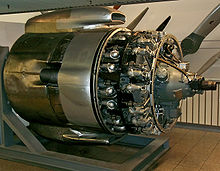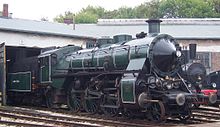
Back Verbunddampfmaschine German Motor compuesto Spanish Yhdyskoneisto Finnish Motore compound Italian 複式機関 Japanese 복식 기관 Korean Compound-stoommachine Dutch Maszyna parowa potrójnego rozprężania Polish


A compound engine is an engine that has more than one stage for recovering energy from the same working fluid, with the exhaust from the first stage passing through the second stage, and in some cases then on to another subsequent stage or even stages. Originally invented as a means of making steam engines more efficient, the compounding of engines by use of several stages has also been used on internal combustion engines and continues to have niche markets there.
The stages of a compound engine may be either of differing or of similar technologies, for example:
- In a turbo-compound engine, the exhaust gas from the cylinders passes through a turbine, the two stages being dissimilar.
- In a compound steam locomotive, the steam passes from the high-pressure cylinder or cylinders to the low-pressure cylinder or cylinders, the two stages being similar.
- In a triple-expansion steam engine, the steam passes through three successive cylinders of increasing size and decreasing pressure. Such engines were the most common marine engines in the golden age of steam.
These examples and compound turbines are the main but not the only uses of compounding in engines, see below.